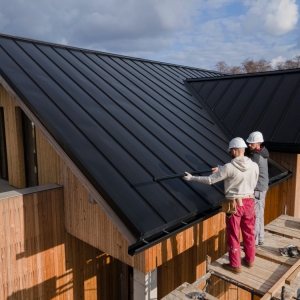Rivets are small, cylindrical mechanical fasteners with a head on one end and a tail on the other. When installed, they permanently join materials by forming a new head on the tail end, effectively "locking" the rivet in place. Rivets are among the oldest forms of fastening, dating back to ancient times, but they remain widely used today due to their reliability, strength, and ease of installation in various applications. This article explores the basics of rivets, their types, benefits, and applications across different industries.

How Rivets Work
Rivets work by forming a permanent bond between two or more materials, such as metal, plastic, or wood. The process involves inserting a rivet into pre-drilled holes in the materials to be joined. Once the rivet is in place, a tool (such as a rivet gun or hammer) is used to deform or "buck" the tail end, creating a new head and securing the rivet in place. This deformation locks the rivet tightly, ensuring it holds materials together even under stress.
Rivets come in various types, each suited to specific applications and environments. Some of the most common types include:
Solid Rivets: The simplest type, solid rivets are made from a single piece of metal and require access to both sides of the workpiece for installation. They are highly durable and are commonly used in structural applications like bridges, buildings, and aircraft.
Pop Rivets: Designed for applications where only one side of the workpiece is accessible, pop rivets are installed using a special tool that pulls a mandrel through the rivet, expanding and securing it. Blind rivets are widely used in manufacturing, automotive, and construction industries.

Tubular Rivets: These rivets have a partial hole in the tail end, making them easier to deform during installation. They are typically used in applications where a secure yet lightweight fastener is needed, such as in electronics, clothing, and light-duty assemblies.
Split Rivets: Split rivets feature a tail end that splits into two, spreading outwards when installed. This design provides additional grip and holding power, making them ideal for joining soft or brittle materials, such as leather, plastic, and certain textiles.
Drive Rivets: These rivets have a small mandrel that is driven into the rivet with a hammer, causing it to expand and grip the material. They are often used for quick, low-load applications where speed and simplicity are important.
Flush Rivets (Countersunk Rivets): Flush rivets are designed to sit flush with the surface of the material, minimizing drag and creating a smooth surface. They are commonly used in aerospace applications to improve aerodynamics.
Benefits of Using Rivets
Rivets offer several advantages as fasteners, including:
Strength and Durability: Rivets are strong and resistant to shear forces, making them suitable for applications where materials need to stay firmly joined under load or vibration.
Cost-Effectiveness: Rivets are generally inexpensive and offer an economical solution for permanent fastening, especially in mass production.
Corrosion Resistance: Many rivets are made from materials like aluminum, stainless steel, and copper, which resist rust and corrosion, making them ideal for outdoor or marine environments.
Versatility: With various types available, rivets can be used on a wide range of materials and applications, from heavy structural work to delicate fabric or electronic assemblies.
Quick Installation: Rivets are typically faster to install than other fasteners, such as bolts, which often require threading and tightening.
Applications of Rivets
Rivets are used across many industries due to their adaptability and strength. Some common applications include:
Construction: In buildings, bridges, and other structures, rivets are commonly used to join steel beams and structural components, offering long-lasting strength and resilience.
Aerospace: Rivets, particularly flush rivets, are critical in aerospace for constructing aircraft bodies. Their durability and smooth finish help improve aerodynamics and withstand high-altitude conditions.
Automotive: In the automotive industry, rivets are used in bodywork, interior assemblies, and even engine components where durability and a lightweight connection are needed.
Manufacturing: Blind rivets are widely used in manufacturing for quickly assembling metal sheets, plastic panels, and other components. Their speed of installation is an asset in high-volume production.
Electronics: Lightweight rivets like tubular rivets are used in electronics for joining components without adding bulk, allowing for compact device designs.
Textiles and Leather Goods: Split rivets are popular in the fashion industry, where they’re used to attach labels, decorative elements, and structural components in bags, belts, and shoes.

Choosing the Right Rivet for the Job
When selecting rivets, consider the following factors:
Material Compatibility: Rivet material should match or be compatible with the materials being joined to prevent corrosion or galvanic reactions.
Strength Requirements: Solid rivets provide maximum strength, while tubular or blind rivets are suitable for lighter applications where speed and accessibility are priorities.
Accessibility: For applications with access to only one side, blind rivets are ideal, whereas solid rivets require access to both sides of the material.
Environmental Conditions: In corrosive or high-temperature environments, materials like stainless steel or aluminum are recommended to ensure long-lasting durability.
In summary, Rivets are an essential fastener that provides strong, durable, and permanent connections across a wide range of industries. With various types available for different applications, they offer versatility and reliability. Whether in structural construction, automotive manufacturing, or aerospace, rivets play a critical role in creating robust, long-lasting assemblies. By selecting the right type of rivet and considering material compatibility, strength needs, and environmental conditions, manufacturers and builders can ensure the success and longevity of their projects.







